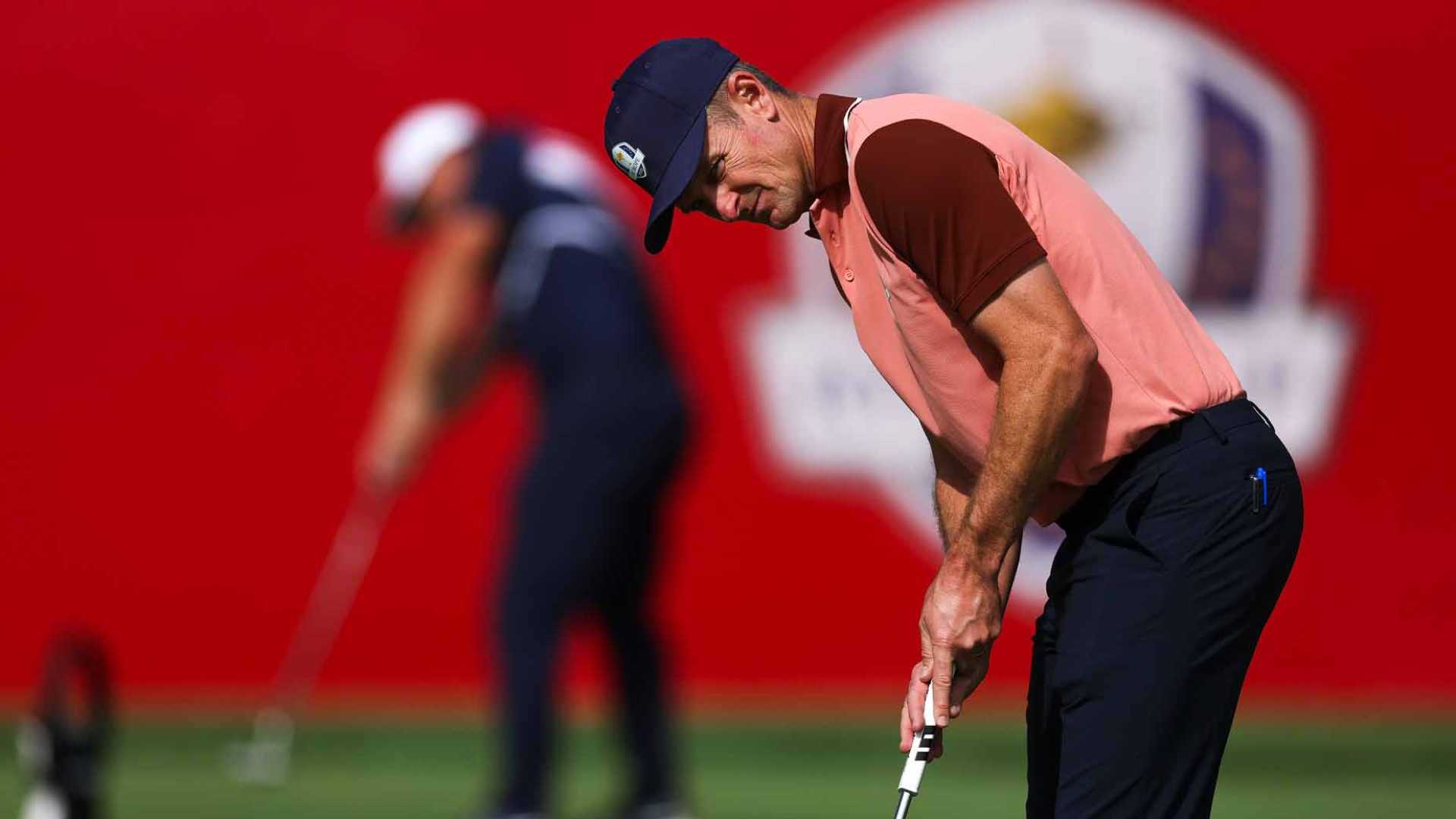Sports
Justin Rose’s Putting Routine Shines Ahead of Ryder Cup Showdown

FARMINGDALE, N.Y. — Justin Rose of Team Europe fine-tuned his putting stroke Monday at Bethpage Black in preparation for the upcoming Ryder Cup. In past Ryder Cups, putting has proven critical for winning matches, with key putts often shifting momentum and fueling comebacks.
During practice, Rose utilized several training aids, drawing the attention of Paxton O’Connor, a putting expert. O’Connor noted that despite the complex setup, Rose’s routine is straightforward and carries valuable lessons for golfers of all skill levels.
O’Connor pointed out that Rose is focused on visualization during his putting practice. “His eyes are smoothly moving along the line and then trace back,” O’Connor said. “Then, he holds that picture and makes a committed stroke.” This technique allows Rose to see the path his ball will take before hitting it, increasing his confidence and precision under pressure.
Visualization isn’t new; elite players often utilize it, yet many amateurs overlook its benefits. Integrating this skill into practice routines can enhance focus and lessen anxiety, essential tools as players approach high-stakes situations like the Ryder Cup.
The gate drill is another essential practice technique Rose employs, which helps ensure putts start on the intended line. “The gate is serving as a reference for start line control,” O’Connor explained. The immediate feedback from the drill helps players identify their misses and adjust accordingly.
To set up the drill, O’Connor suggests placing two tees about 10–12 inches in front of the ball on the desired start line. Golfers can then practice their putts, aiming for the balls to pass smoothly through the gate.
The Tour Toolkit, developed with feedback from professional golfers, aims to aid in practicing stroke consistency and aim. This bundle includes various tools for golfers to create effective practice stations.
Another insightful aspect of Rose’s routine is his use of reference points. O’Connor mentioned that Rose creates a “calibration station” to adapt to different greens quickly. He utilizes a digital training aid that provides feedback on rhythm and tempo, in addition to using tees to mark the limits of his swing.
“It’s nice to have something to reference back to and calibrate from,” O’Connor said. This structured approach to practice facilitates smoother adjustments to new greens, enhancing speed control, a vital skill to maintain during the Ryder Cup competition.












